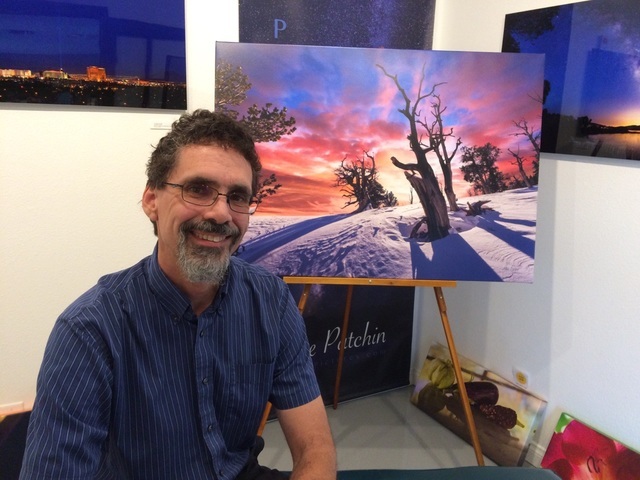30-year Las Vegas photog relies on technology to stitch together 360-degree views
Steven Patchin has seen photography morph from single-lens reflex cameras to today’s sophisticated digital ones. He’s seen the dark room give way to the computer and programs such as Photoshop, allowing one to manipulate photos to the edges of the imagination.
Now, he’s found a new passion — high-dynamic range photography, applying it specifically to panoramic images. These are not a fisheye lens look at the world.
“People have been doing it for a long time,” he said. “It’s just that only recently, that I’ve seen, are people making flat images of them, is what I think is new.”
He got into it a few years ago after a photography convention was in town and forwarded the idea. His studio, Patchin Pictures, 3151 S. Jones Blvd., features his latest works.
“It was really inspirational to see the ideas that people had. … I taught myself the same way I’ve done all photography: I hear about an idea, and I go out and study it like crazy, read books, look at what people are doing and then just try it,” Patchin said.
“I take multiple shots, move the camera and take more. When I’m done, I stitch them together. You’re seeing everything flat, like seeing everything around you but without turning your head.”
The camera is mounted on a tripod, ensuring the framing of each shot has the same perimeters.
There is the Milky Way, shot at Mount Whitney on a cloudless night. Another photograph is of the Strip, complete with fireworks. That one took 77 photos, seven for each position of the camera to ensure he got the best fireworks. Yet another has three antique roadsters on the Strip … sort of. He photographed the vehicles at an indoor location and then added them to the nighttime street scene.
One of his more notable pictures is of Death Valley as the flowers were in bloom. They are lit up by the beams of the rising sun as it peeks over the shoulder of the mountainside.
“I drove out there in the middle of the night and, really, in total dark picked this spot,” Patchin said. “I drove up … and went back and forth, knowing the flowers were going to bloom as good as they were going to bloom, and I just wanted to find something different for the foreground and went out and waited for the sun to come over the hill. I didn’t know exactly where it was going to come over. Fortunately, it worked out.”
Because these are panoramas, the photos stretch along the wall, far longer than they are tall.
Bob Maes, director of the Phil Maloof estate, has known Patchin for more than a decade and first contacted him about doing some video transfers. Seeing his work, Maes said, “I thought, ‘Wow, this guy has an eye for photography.’ And with his credentials, some of the awards he’s won, and looking at his work, we employed him to do all our in-house photography and eventually led to a documentary and … books.”
He said Patchin was an easy person with whom to work.
“And when he tells you something will be done on a certain date, it is,” Maes added.
Patchin said his experiences with old-school photography have made him appreciate the flexibility and creativity allowed by today’s technology.
“I used to do everything in a dark room. I came from those days of large format cameras, carefully processing the film and doing everything myself, as the old-school way,” he said. “I used to spend a day to get one good picture, and even then, it was never good enough to me. It was never quite what I wanted. People love to have this battle between old school and (photography) technology, and they say one is worse than the other. I don’t look at it that way. There’s something to take from both. But I wouldn’t go back to the old way because there are so many more tools to use now.”
What intrigues him most about it?
“That it has multiple uses that you can post it online and look around inside of it like a virtual tour,” Patchin said. “And take it and make it flat and see it in still a different way. The idea that you can see everything around you in one glance without having to turn your head is fascinating to me. In the old days, you’d spend a day to get one good picture, and even then, it might not be what you wanted.”
But, he said, there’s still the thrill of getting that one shot with which he can work.
Patchin declined to give a price range for the photos. For more information, visit StevePatchinPhotography.com.
To reach Summerlin Area View reporter Jan Hogan, email jhogan@viewnews.com or call 702-387-2949.
Patchin Pictures
3151 S. Jones Blvd.
Visit StevePatchinPhotography.com or call 702-240-6777.















